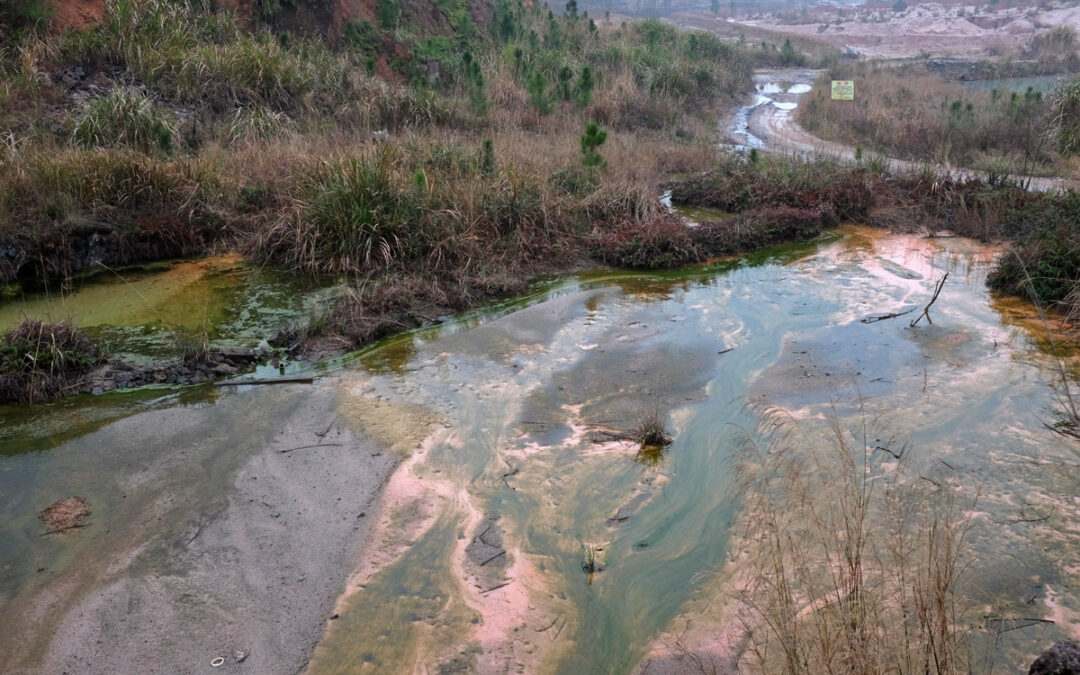A few years back, the phrase “Rare Earth” would most likely elicit recollection of a 70s Motown-soul band, that had a number of hit records (the most remembered, at least to this boomer, is “I Just Want To Celebrate”). Today, however, “Rare Earth” elicits conversations about renewable energy.
Or at least it should. Rare Earths (not actually rare, just “hard to find a lot in one place”) are a series of elements, some of which are used for solar panel (neodymium, terbium, indium, dysprosium, and praseodymium) and wind turbine (dysprosium, neodymium and praseodymium) manufacture. They are mined in a number of countries around the world, with China being the biggest producer by far at 70% of the world market, producing half again as much as the next nine top producers combined. America sits at #2 in global production (at about 20% of China’s output) but gets all its rare earths from a single mine in California, and imports almost as much as it extracts from that mine. #3 on the list is Myanmar (17% of China’s output), a nation that is in the midst of a military coup d’etat, and Australia is #4 (16% of China’s output). After that, production by nation drops precipitously.
Rare Earths are also used in many to most of our technological products. Between “green” energy, the broader demands from tech manufacturing, electric cars, and the world’s (in particular, the third world) continuing, the demand for these elements will multiply.
The need for Rare Earths is well-known to a subset of policy makers, and they’ve been dubbed “critical minerals” by the US government.
The biggest known reserves of these elements are in China, Brazil, Viet Nam, Russia, and India. America is pegged at only 3% of China’s reserves. If you pay any attention to the geopolitical landscape, you can see a problem already.
There’s another problem. Extracting Rare Earths is a dirty process. It requires substantial quantities of water, water that it contaminates with heavy metals. China, in particular, has made a big mess in its mining operations, toxifying aquifers and ground water. Remember the bit about them being “rare” because they aren’t concentrated? Unlike gold, often found in pure form in nature, or metallic ores, often found in veins, Rare Earths need to be leached out of earth in large scale operations involving chemical salts and the aforementioned water.
We would expect that nations such as America would impose strict environmental requirements on domestic producers, but it’s a reality that poorer and developing nations, as well as nations like China where the population’s voice is more an annoyance than a policy driver, aren’t going to be as fastidious. And, indeed, China did so much damage that she’s now forced to clean up past messes (though we should be skeptical that such cleanup would rise to anywhere near the level that’d be demanded in America).
A radio personality once observed that “the farther away people are, and the browner they are, the less we care about them.” I wonder how many “greens” in America prioritize the environmental havoc being created by Rare Earth mining in their demands that we completely decarbonize our nation’s energy sector?
Such havoc will extend past China’s borders as the demand for Rare Earths ramps up. Considering that Russia has massive reserves, and is currently reliant on natural gas exports, the decrease in demand for the latter from Western decarbonizing will increase the value of the former, and we know quite well how well-behaved Russia has been on matters ecological. Kazakhstan, one of the world’s biggest producers of chromium, has ruined Syr-Daria, the longest river in central Asia. Congo, the world’s leading producer of cobalt (essential for lithium batteries), is also polluting her water and contaminating her citizens. All this is just a blip when we consider how much more of such we’ll need to accomplish the Green goal of carbon emissions neutrality in America.
What’s the answer, then? Same one I’ve been tub-thumping for years: Continue fracking, to shift us away from coal (and thereby reduce carbon output per unit energy by 3/4, and save thousands of lives a year from cleaner, less particulate-laden air). Pursue modern, modular nuclear power (cleanest and safest of all). Invest in geo-engineering research that would mitigate atmospheric carbon without demanding a cessation in the use of carbon energy. And, of course, look to mine Rare Earths domestically for the locations and applications where wind and solar are economically competitive without mandate or subsidy (an expected irony will be the inevitable resistance to such mining by the very Greens that demand we go all wind and solar).
Otherwise, all we’re doing is foisting pollution problems on other nations, and inflicting harm on the world’s poorest.


And once you get past what it takes in terms of resource extraction what it takes to make ‘Green’ energy: then what to do with the end-of-life? There’s no grand plan to recycle these massive LiON batteries, these carbon fibre windmills. Blerg.